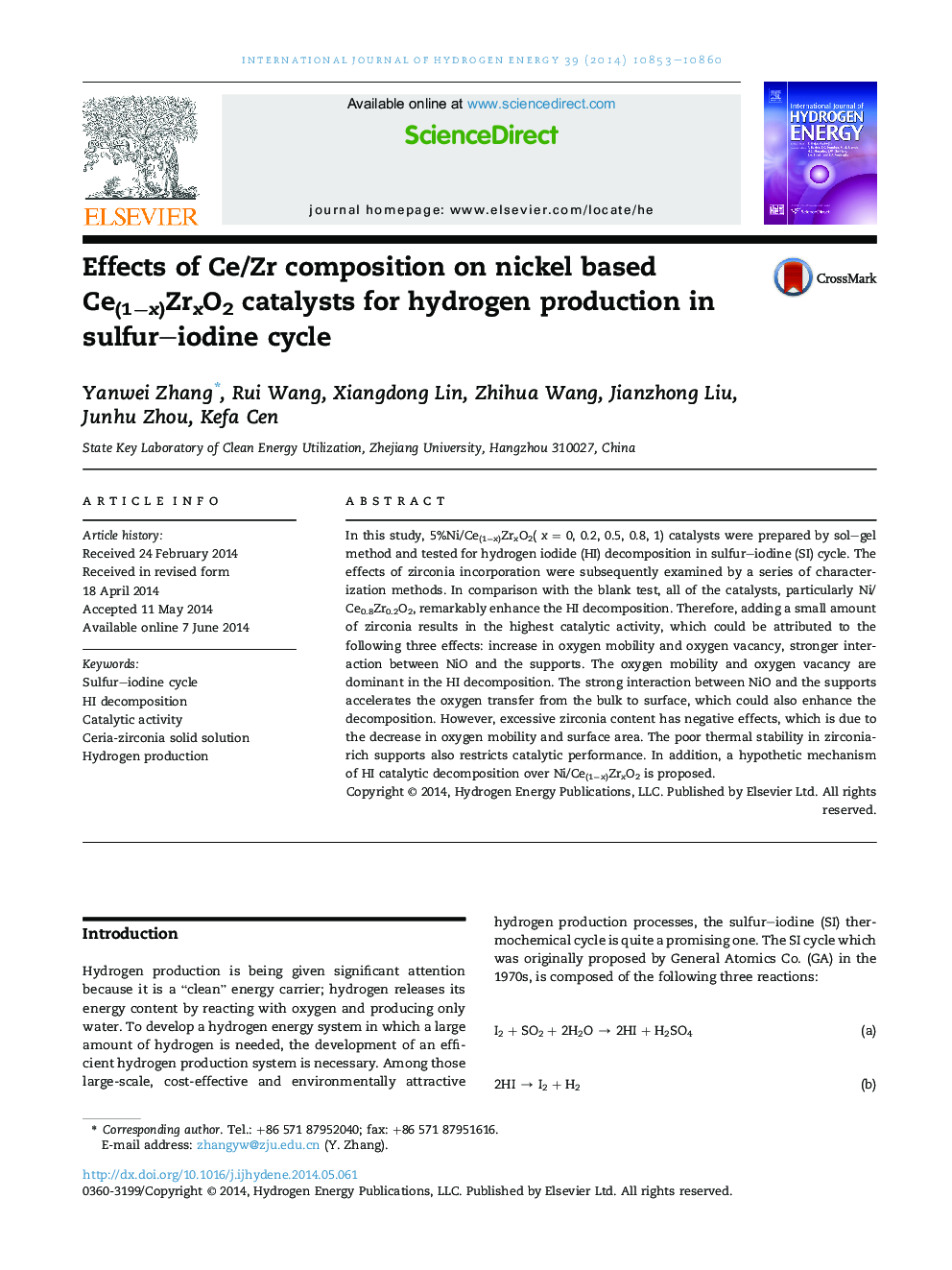| Article ID | Journal | Published Year | Pages | File Type |
|---|---|---|---|---|
| 1272227 | International Journal of Hydrogen Energy | 2014 | 8 Pages |
•Ni/Ce(1−x)ZrxO2 catalysts were investigated for HI decomposition.•Ni/Ce0.8Zr0.2O2 catalysts presented the best performance.•Optimum oxygen mobility and oxygen vacancies were obtained in Ni/Ce0.8Zr0.2O2.•Ni distributing and its interaction with support was enhanced by incorporating Zr.•A hypothetic mechanism of HI decomposition over Ni/Ce(1−x)ZrxO2 was proposed.
In this study, 5%Ni/Ce(1−x)ZrxO2( x = 0, 0.2, 0.5, 0.8, 1) catalysts were prepared by sol–gel method and tested for hydrogen iodide (HI) decomposition in sulfur–iodine (SI) cycle. The effects of zirconia incorporation were subsequently examined by a series of characterization methods. In comparison with the blank test, all of the catalysts, particularly Ni/Ce0.8Zr0.2O2, remarkably enhance the HI decomposition. Therefore, adding a small amount of zirconia results in the highest catalytic activity, which could be attributed to the following three effects: increase in oxygen mobility and oxygen vacancy, stronger interaction between NiO and the supports. The oxygen mobility and oxygen vacancy are dominant in the HI decomposition. The strong interaction between NiO and the supports accelerates the oxygen transfer from the bulk to surface, which could also enhance the decomposition. However, excessive zirconia content has negative effects, which is due to the decrease in oxygen mobility and surface area. The poor thermal stability in zirconia-rich supports also restricts catalytic performance. In addition, a hypothetic mechanism of HI catalytic decomposition over Ni/Ce(1−x)ZrxO2 is proposed.
Graphical abstractFigure optionsDownload full-size imageDownload as PowerPoint slide
